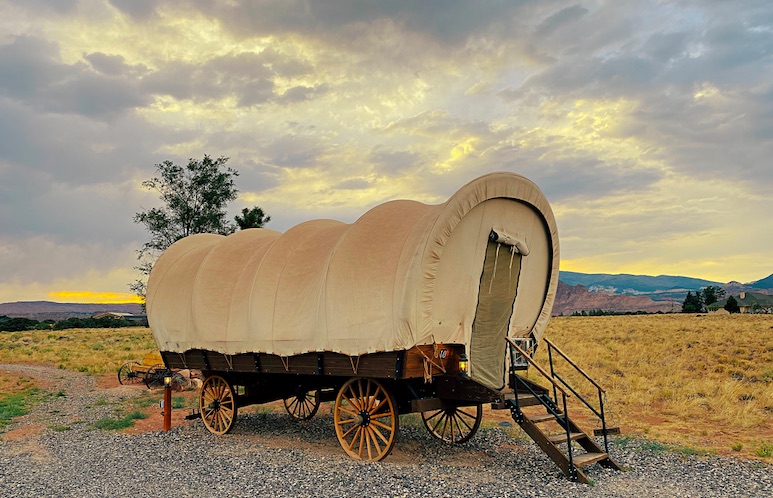DISCOVERING THE PAST AND FUTURE OF THE OREGON TRAIL
When I was in Nebraska, at Scottsbluff National Monument, I thought about what it must have been like for the pioneers who made the perilous journey west on the Oregon Trail. The whole concept of the Oregon Trail seems preposterous in today’s society, but it was precisely this journey that laid the groundwork for our very existence out here in the West.
The 2,170 miles of trail that hundreds of thousands of people would travel in the early 1800s in search of a better life had been explored and carved by pioneers. This was fraught with peril, and it led to the upheaval and terrible loss of indigenous lives; these are facts that must not be overlooked.
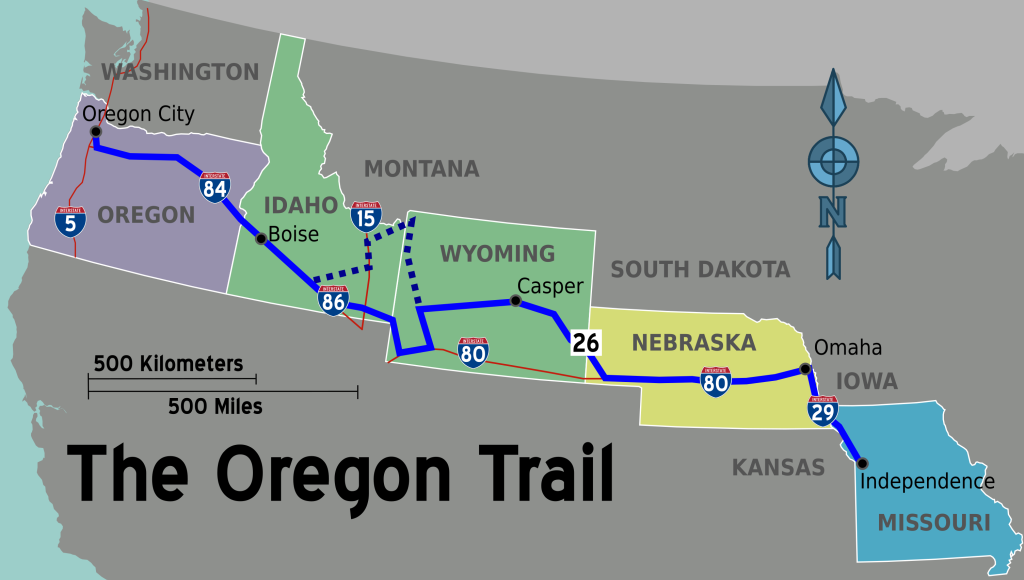
WHERE THE OREGON TRAIL BEGAN
The village of Independence, Missouri, on the Missouri River, was an important starting place for the Oregon Trail. With a well-stocked trading post and easy river access to the trailhead, it was an ideal starting point for the hard six-month trek ahead. Learn more about the origins of the Oregon Trail by visiting the National Frontier Trails Museum.It took the pioneers 486 miles over the prairies of Nebraska after they left Independence well-stocked. They passed the Missouri River, skirted the northeast corner of Kansas, and finally reached the Great Plains. During the first third of the Oregon Trail, travelers faced primarily weather-related challenges. In west Nebraska, the landscape started to seem more three-dimensional, portending trouble ahead when we crossed the Rocky Mountains.
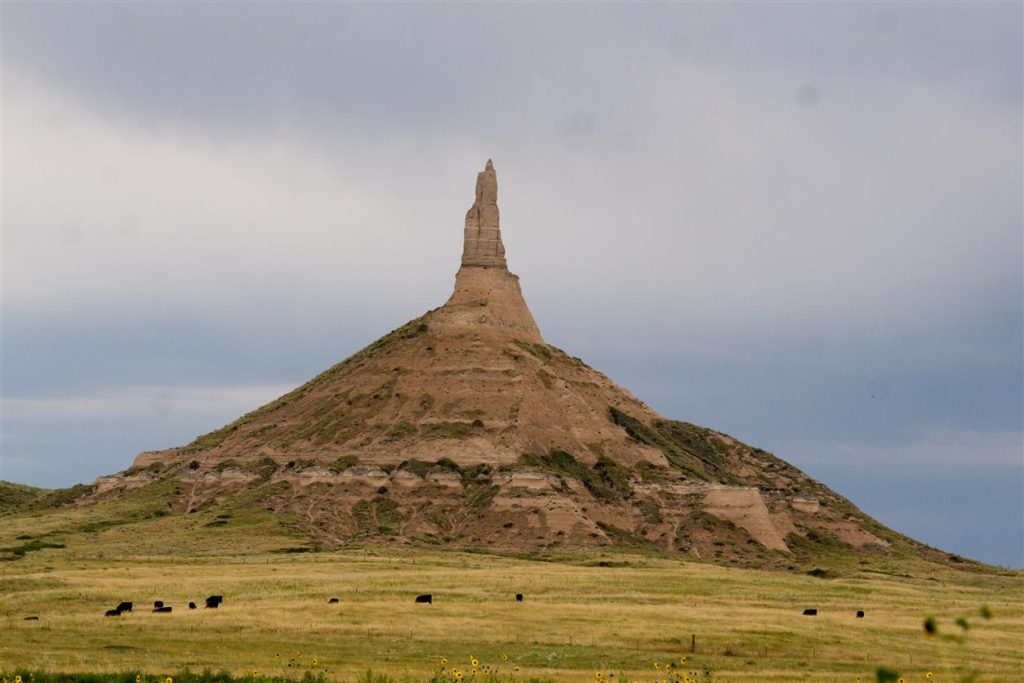
THE EMIGRANT LANDMARK, CHIMNEY ROCK
Chimney Rock, a massive rock formation in West Nebraska, was the most well-known landmark along the Oregon Trail. You may find out more about this amazing geological feature by visiting Chimney Rock and the museum named after it, Chimney Rock Museum. From May till October, you can visit.
Chimney Rock was significantly taller than its current 325 feet when the Oregon Trail was at its peak in the 1800s. The spire has shrunk over time due to natural causes including weathering and lightning strikes.
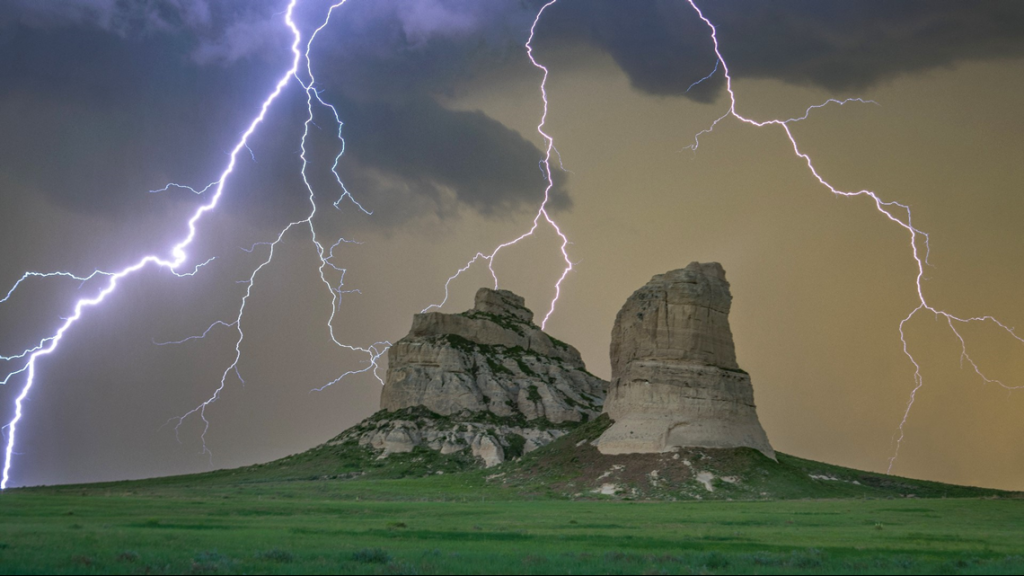
THE TRIALS AND TRIBULATIONS OF TRAVELING THE OREGON TRAIL
Between the years 1840 and 1860, when westward expansion was at its height, tens of thousands, if not hundreds of thousands, of individuals set out on the Oregon Trail. Ten thousand to thirty thousand of them perished in the attempt. Why did so many people perish, and what were the dangers?
Infectious disease was the leading cause of death for Oregon Trail travelers. Diseases like cholera, dysentery, and smallpox spread rapidly from wagon to wagon. Due to the scarcity of food and the severity of the climate, malnutrition and famine were also frequent. Danger lurked around every bend in the river, across every grassland, and atop every mountain when the weather wasn’t cooperating.
Typically, pioneers would set out in the spring to arrive at their location well before the onset of winter. There were instances when snow and storms came early, and there were times when the journey itself was delayed. Extreme heat that might cause heatstroke, freezing cold that could cause hypothermia, and violent storms that could wipe away supplies and even take lives were all part of the adventure pioneers took.
Lastly, there would be sporadic warfare with neighboring Native American tribes, which frequently resulted in casualties on both sides.
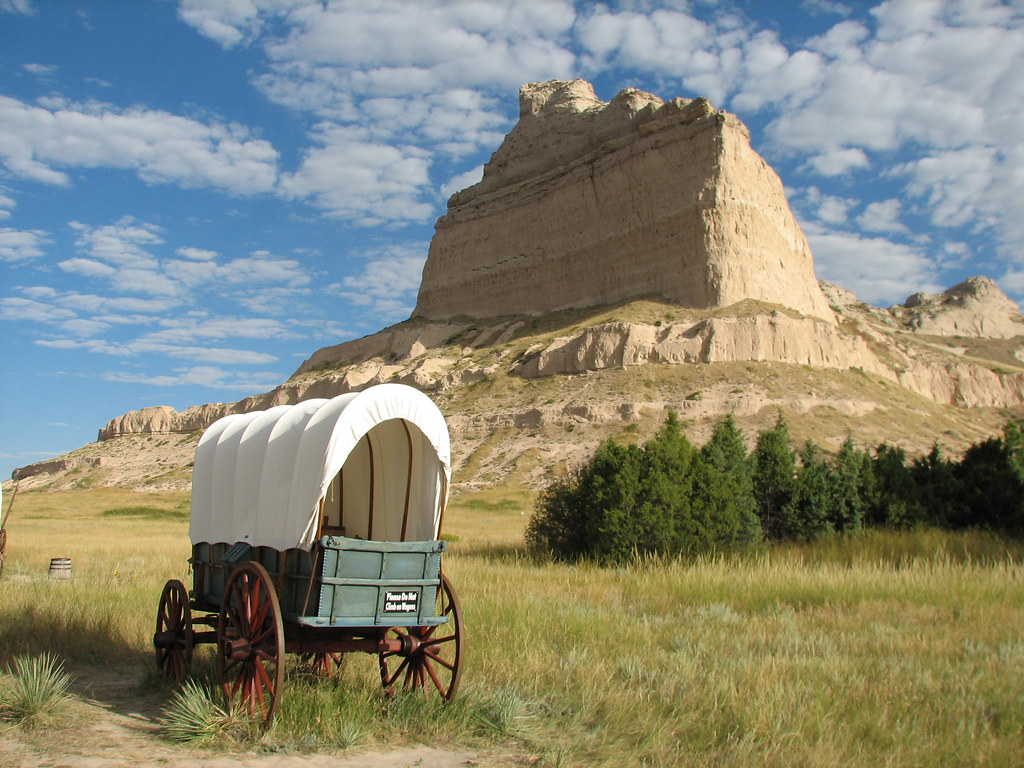
OXEN AND OTHER LOGISTICAL NIGHTMARES
The majority of travelers on the Oregon Trail used ox-drawn wagons, commonly called “prairie schooners,” to get from place to place. The average family of four to six (including children) could fit inside, and they had storage space for 2,000 to 2,500 pounds of goods. Families typically attempted daily distances of between 10 and 20 miles. They stopped periodically to rest the oxen, complete chores, and forage for food. Sundays were also a common day of rest for pilgrims who wanted to honor the Sabbath. In general, the trip would take between four and six months to accomplish.
The hardest portion of the job, hauling the wagon, fell on the shoulders of the oxen, hardy creatures noted for their strength and stamina. Six people were sufficient to haul over 3000 pounds. The ox was a low-maintenance eater that could get by on a diet of grazing throughout the day.
It was sometimes cheaper to take mules or horses, but they were needed in twice the numbers. When compared to horses or mules, oxen were both slower and more stubborn, making them less suitable for river crossings. Despite these small drawbacks, most travelers still opted to use oxen to move their carts.
The oxen didn’t even require shoes to traverse the flat prairies. Their hooves needed to be protected from the rocky, steep ground, so they were given shoes. Oxen require eight shoe pieces as opposed to four for horses because of their cloven hooves. In addition, they don’t raise their feet like horses do, necessitating a new method of shoeing.
SHOEING AN OX 101
Step 1: Dig a big trench
Step 2: Tie ropes around the ox’s legs to keep them from running away
Step 3: Flip them on their back into the trench
Step 4: Place all eight shoe parts on their feet within 30 minutes before the weight of their body suffocates them
CROSSING THE ROCKY MOUNTAINS
Pioneers quickly learned that the South Pass in modern-day Wyoming provided the most direct route across the Rocky Mountains. Unlike many other portions of the Rockies, the pass was wide and gentle. Scouts, mountain men, and guides occasionally assisted pioneers in finding their way through the pass.
There is still another Oregon Trail museum in Casper, the last hamlet before the pass.The National Historic Trails Interpretive Center celebrates the history of the Oregon Trail and its various branches through interactive exhibits that highlight the contributions of Native Americans and early travelers. The museum does not charge an entrance fee.
In order to traverse harder terrain, pioneers often had to make adjustments to their wagons if they were unable to make it to South Pass. To do this, they had to lighten the load, strengthen the wheels and axles, and use ropes or chains to slow the wagon’s descent on inclines. When things got out of hand, pioneers sometimes had to take the wagons apart.
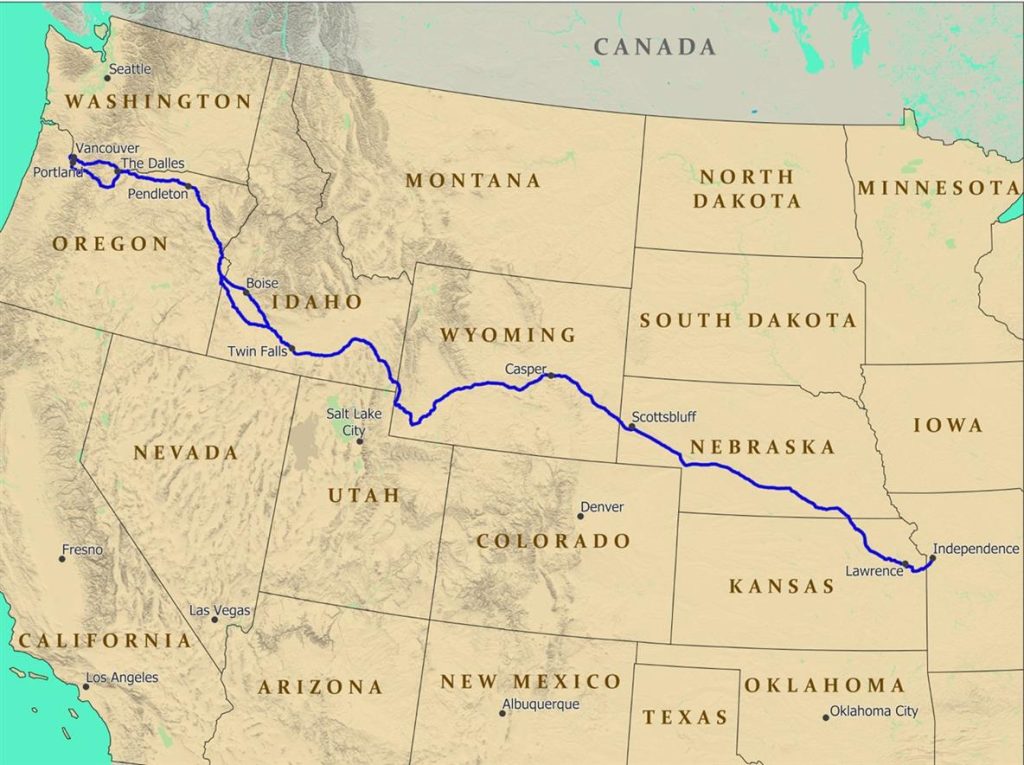
THE EMIGRANT TRAIL
As a generic word, “Oregon Trail” usually describes a route from Missouri to Oregon. The significance of the trail, however, goes much beyond its actual path. The California Trail, Mormon Trail, Bozeman Trail, and Pony Express Trail were just a few of the many branches that sprouted up as westward migration picked up steam in the middle of the 1800s. The term “Emigrant Trail” describes the entire route taken by these people.

